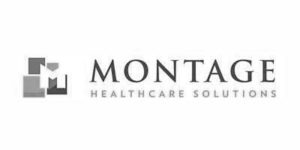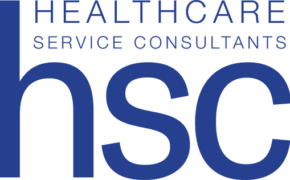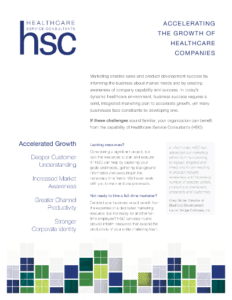Table of Contents
 This case study features start-up Montage Healthcare Solutions, since purchased by Nuance Communications, Inc. When we first started working with Montage, their only product was a radiology data mining and analytics tool. This tool, developed at the Penn Medicine health system, was the “first of its kind” within the market. Products that solve an existing problem in an innovative way need a unique strategic approach. Marketing Montage’s analytics tool required us to raise market consciousness of both the problem and the solution.
This case study features start-up Montage Healthcare Solutions, since purchased by Nuance Communications, Inc. When we first started working with Montage, their only product was a radiology data mining and analytics tool. This tool, developed at the Penn Medicine health system, was the “first of its kind” within the market. Products that solve an existing problem in an innovative way need a unique strategic approach. Marketing Montage’s analytics tool required us to raise market consciousness of both the problem and the solution.
The company leadership and co-founders were practicing radiologists. They developed the core software to assist in their daily clinical practice. None of them had any business experience. And, they were developing and running the business on a part-time basis while still working their full-time jobs.
As a result, prospects were not aware of the company’s solution–of the value it provided.
- Through Healthcare Service Consultant’s guidance, the company was able to:
- Achieve heightened market awareness and status as a leader in their segment
- Educate decision-makers about the solutions value
- Nurture reseller partnerships that ultimately resulted in the sale of the company
1. Client Company Overview
The primary market drivers for Montage were radiology departments’ inability to:
- Quantify their contribution to clinical quality
- Measure and understand the factors affecting individual radiologist productivity
- As well-known radiologists from a prestigious healthcare organization, the company’s founders already had a market advantage. They used their professional experience to develop proof points and enhance their credibility.
They educated prospects on:
- The importance of clinical quality metrics
- The value of having the right measuring tools
- The impact of productivity and clinical quality on the value that radiology provides to their healthcare institution
2. Challenges
2.1 Small Size
At inception, Montage was limited to only five contributing individuals. The founders were also full-time practicing radiologists. No one was dedicated to marketing efforts and there was no internal expertise in product marketing.
2.2 Little Problem Awareness
When HSC came on board, the company had a couple of reference sites and sales were just ramping up. Radiology department leaders were generally unaware of the ability to quantify key metrics that could identify issues impacting their own departments. However, there was an increasing acknowledgement within the radiology community that radiology departments needed to be more accountable and not just view themselves as a profit center for the hospital. What was lacking was agreement on the metrics that needed to be measured, the necessary tools for tracking such metrics and an understanding of what to do with the information to initiate change..
2.3 Market Resistance
Many radiology staff members were resistant to embrace analytics and performance metrics. They feared the results would impact their employment or compensation if benchmarks weren’t met. This resistance required Montage to develop different messaging for the different buyer personas in the market. Overcoming these objections and working with other thought leaders was a critical goal for all sales collateral and marketing materials.
3. How We Helped

Because Montage was one of the first companies to develop a radiology department analytics software, the primary goal was creating awareness in the market. We centralized the company’s marketing efforts in a few focus areas.
3.1 Content Development & Thought Leadership
The development of thought leadership and educational content was a significant part of building awareness among the target buyer personas. We created content resources including:
- White papers and case studies that explained, in detail, the software’s capabilities and provided examples of how the software had improved quality and efficiency in radiology departments. These assets also described how the various metrics were relevant to the needs and perspectives of different buyer personas — both leadership/administration within the radiology department and radiologists themselves (users). The strategy was to help all involved to better comprehend how the software could help radiology departments as a whole succeed.
- Website content that supported the evolution and maturation of the companies products. Content required different messaging as the company grew and evolved. Messaging took into account the feedback the company was getting from customers, prospects, and third-party industry analysts. All messaging was revisited every six months and updated as needed.
- Live webinars were instrumental in sharing tutorials of how the software worked, what the data gathered meant, why it was important to track certain performance metrics as well as what the results meant. The webinars provided a vehicle by which the details could be easily explored verbally and they were recorded for later sharing and playback to educate prospective customers.
- Earned content and conference presentations, which were highly influential in keeping the company in the news and at the forefront of all conversations about radiology performance improvement. As well known radiologists themselves, the founders gained significant traction among the radiology community and other thought leaders that positioned them as experts in their field, creating additional opportunities to educate the market without explicitly promoting the company.
3.2 Analyst Relations
Visibility among industry analysts, and inclusion in their industry reports was another important mechanism to educate the market and gain impartial credibility. An analysis impartial 3rd party observation often mentioned Montage Healthcare as a leading company within the radiology market–publicizing the company’s significant impact on solving the problems at hand. This helped the Montage software become a trusted solution among healthcare providers and other industry players, and sales improved as a result.
Analyst feedback also contributed to shaping marketing as well. Understanding Montage’s place among the competition was valuable for helping to refine differentiating messaging that further connected their product with the market’s needs.
3.3 Partnerships with Manufacturers
Because Montage sold directly to healthcare providers and through OEM partners, the marketing effort needed to support both channels. Over time it was determined that the integration of the Montage solution into existing systems being used by radiology departments had significant value. This was in-part because the unstructured information that the Montage application analyzed was contained in these systems. This required the development of new messaging to support new use cases and capabilities, which was spearheaded by HSC. In addition, the sales and marketing efforts of the partners needed to be supported by HSC to ensure they could effectively sell the combined solution.
3.4 Trade Show Marketing
HSC undertook Montage’s trade show marketing efforts in their entirety, from operational planning and execution to company messaging. This allowed for a consistent, focused approach that was product and benefits centric. We refreshed their booth to enable product demonstrations to occur, supported interactions between customers and prospects so real-world problems could be discussed and we focused messaging on the key benefits provided and problems solved.
4. Results
Over the two-year span in which HSC served as CMO, Montage achieved company growth and market awareness, resulting in the company being purchased by Nuance.

